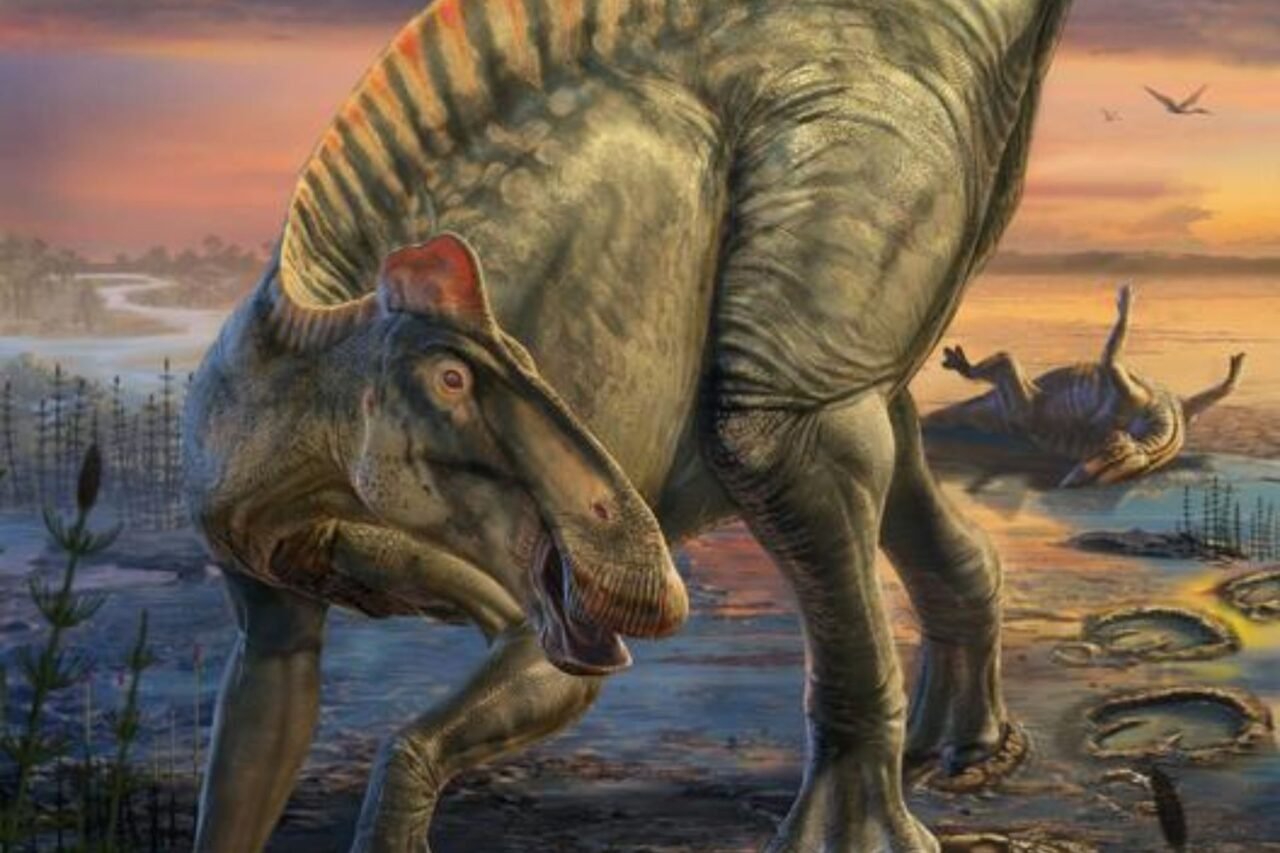In a significant paleontological breakthrough, researchers have utilized well-preserved dinosaur specimens to reconstruct the appearance of the long-extinct species, **Edmontosaurus annectens**. Found in Wyoming’s “mummy zone,” these remarkable fossils offer unprecedented insights into the features of this large duck-billed dinosaur, which roamed the Earth approximately **66 million years ago**.
A study published on **October 26, 2023**, in the journal **Science** details the findings from two exceptionally preserved fossils discovered in the early 2000s. Co-author **Paul Sereno**, a professor at the **University of Chicago**, emphasized the importance of these specimens, stating, “It’s the first time we’ve had a complete, fleshed-out view of a large dinosaur that we can really feel confident about.”
Understanding the Preservation Process
The area known as the “mummy zone” in the **Lance Formation** has been the site of several extraordinary fossil finds since the early 1900s. Researchers have mapped this region, which is renowned for its remarkable preservation conditions. In **2000 and 2001**, Sereno and his team excavated two **E. annectens** mummies: a late juvenile and an early adult. These specimens revealed substantial parts of their external skin surfaces, preserved not as traditional tissue but as an incredibly thin clay film.
Sereno explained, “This is a mask, a template, a clay layer so thin you could blow it away.” The preservation process, known as **clay templating**, occurred after a flash flood buried the dinosaurs in sediment shortly after their deaths. As their bodies decayed, a film of bacteria formed, which electrostatically attracted clay particles from the sediment. This layer created a three-dimensional cast of their true surface, with a thickness of only **0.01 inches (0.02 centimeters)**. Over millions of years, the organic material decayed while the skeleton beneath fossilized.
Reconstructing a Lost World
The findings from the two mummies enabled the research team to reconstruct the living appearance of **Edmontosaurus annectens**. They discovered that this dinosaur featured a fleshy crest along its neck and back, transitioning into a row of tail spikes. Notably, the adult mummy displayed wedge-shaped hooves on its hind feet, marking a significant first in the study of land vertebrates.
“There are so many amazing ‘firsts’ preserved in these duck-billed mummies,” Sereno pointed out. These include the earliest documented hooves in a land vertebrate and the first confirmed hooved reptile. Additionally, the research indicates a distinct difference in posture between the forelimbs and hindlimbs of this four-legged animal.
Using these insights, digital artists recreated the movement of **E. annectens**, depicting it walking on soft mud during the late Cretaceous Period. Sereno noted that this work tells “a coherent story about how these remarkable fossils come to be and what we can learn from them.”
As exploration continues in the mummy zone, the potential for new discoveries remains high. The significance of these findings not only enhances our understanding of dinosaur biology but also illustrates the intricate processes that contribute to fossil preservation.







